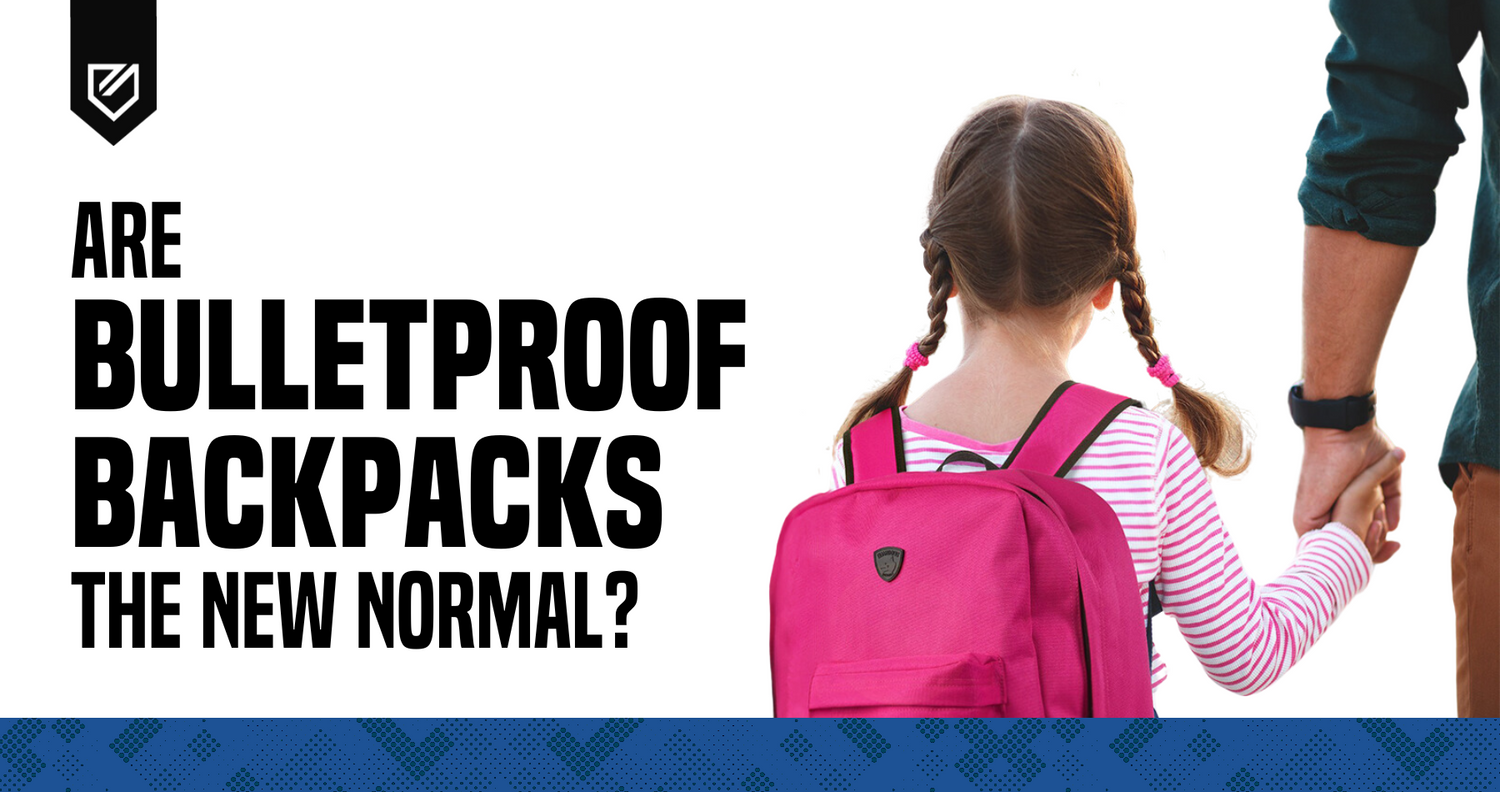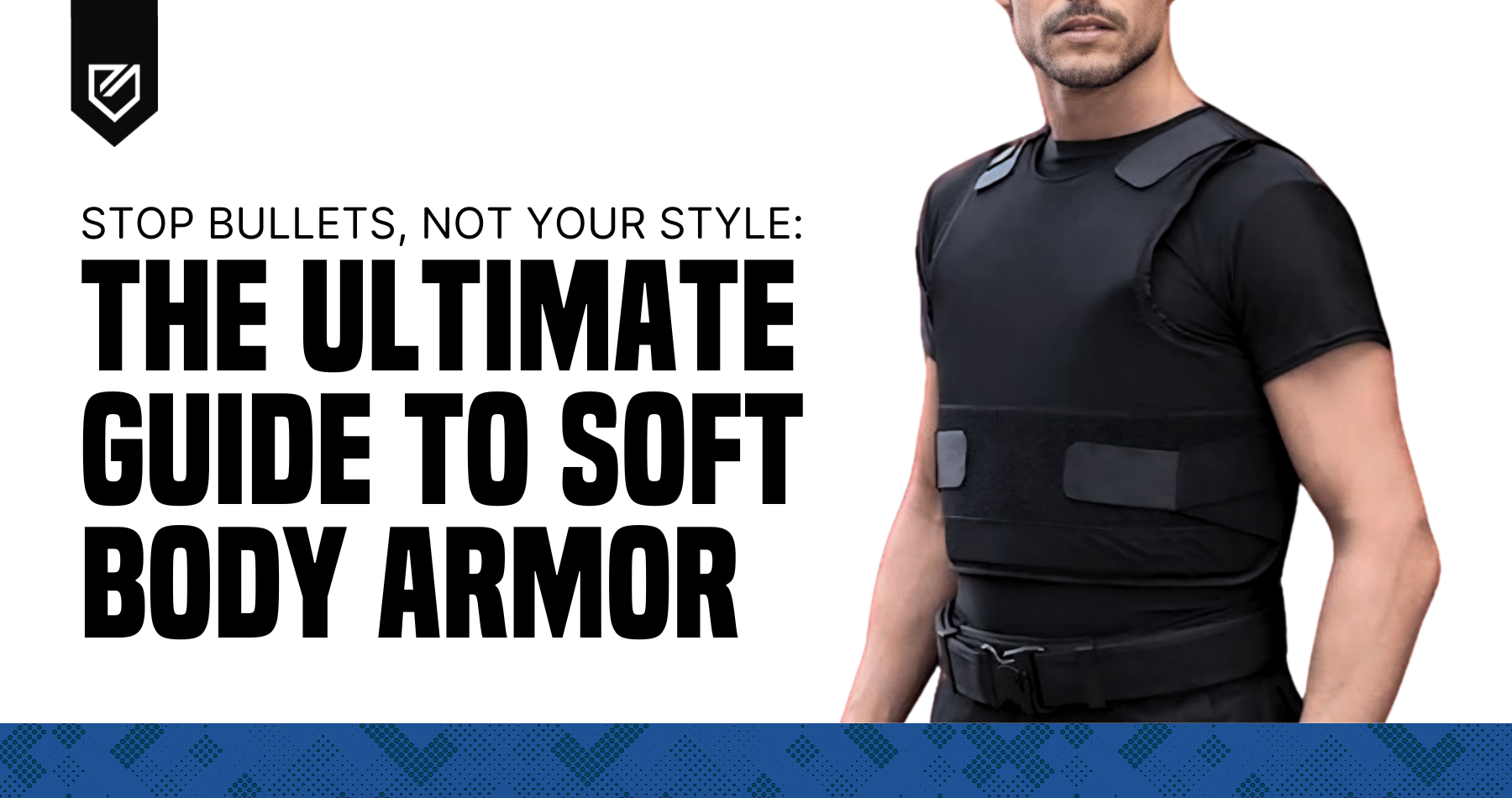Imagine dropping your children off at school, big smiles plastered on their faces. As they enter the school, a knot of worry tightens in your stomach. School shootings, once unthinkable, are now a terrifying reality we face all too often. Of course, as parents, our main concern is our kids' safety.
This surge in fear has led to a dramatic rise of a controversial solution: bulletproof backpacks. The market for these backpacks is expected to nearly double in size by 2030, reaching USD 205 million. But are bulletproof backpacks truly effective? To answer this question, we need to understand how they're made and what regulations surround their use.
Understanding Bulletproof Backpacks

Bulletproof backpacks, also known as ballistic backpacks, function like a discreet shield. They're designed to absorb or deflect the impact of bullets, potentially saving a wearer's life in the unfortunate event of a shooting.
Bulletproof backpacks come with ballistic panels typically made from tightly-woven synthetic fibers like Kevlar® or similar high-strength materials. These panels are strategically positioned within the backpack to shield vital areas like the torso and spine.
Key Components of a Bulletproof Backpack
- Ballistic Panels. The heart of the protection system, these come in various sizes and thicknesses, offering different levels of bullet resistance. The specific material and layering determine the type of ammunition they can potentially stop. Think of them as different grades of armor, with some designed to stop handgun rounds while others might offer protection against higher-powered rifle ammunition.
- Carrier System. This is the backpack itself, designed to comfortably carry essentials while integrating the ballistic panels seamlessly. Features like padded shoulder straps and a breathable back panel ensure comfort during everyday use.
- Outer Shell. The outer shell is the backpack's exterior fabric. It can be made from various materials like nylon or polyester, and may come in different styles and colors. Ideally, the outer shell should be discreet and blend in with a regular backpack so as not to draw unnecessary attention.
Legal Considerations and Safety Regulations
Bulletproof backpacks might seem like a straightforward solution, but there are legal and safety regulations to consider before purchasing one for your child. Here's a breakdown of some key points:
-
Federal Regulations. As of this writing, there are no U.S. states that specifically ban the use of bulletproof backpacks. While some states have regulations concerning the sale or possession of body armor, these do not typically extend to the prohibition of bulletproof backpacks for civilian use.
-
State and Local Laws. The lack of federal regulations doesn't mean there aren't any restrictions. Each state may have its own rules regarding body armor, the general umbrella that includes bulletproof backpacks.
Some states or localities might even have specific laws regarding the type of ballistic material allowed in the backpack. For example, a state might restrict the use of certain materials or have age limitations on who can purchase them. It's crucial to check your state and local laws before making a purchase.
- School Policies. Many schools have policies regarding backpacks, which might include restrictions on size, weight, or specific materials. These policies could potentially extend to bulletproof backpacks. Before investing in one, check with your child's school to see if they have any rules regarding bulletproof backpacks. They might have specific requirements or restrictions on ballistic backpack use within the school premises.
Additional Considerations:
-
Testing and Certification. Not all bulletproof backpacks are created equal. Ideally, the ballistic panels should be tested by a reputable ballistics laboratory to ensure they meet a specific level of protection. Look for backpacks with certifications from recognized bodies like the National Institute of Justice (NIJ) in the US. This certification provides assurance that the backpack has been tested against specific ballistic threats.
- X-Ray Screening. While the TSA generally allows body armor in carry-on or checked bags, the ballistic panels in bulletproof backpacks might trigger additional screening at airports or other security checkpoints. Be prepared for potential delays during security checks if your child is carrying a bulletproof backpack.
Important Note: This information is for general awareness and should not be taken as legal advice. Always consult with local authorities and your child's school for the most up-to-date regulations on bulletproof backpacks.
Weighing Your Options
The idea of a bulletproof backpack for your child can be both comforting and unsettling. While it offers a potential layer of protection, it raises questions about practicality and the overall environment we create for our children.
Here's a breakdown of key points to consider before making a decision:
Materials and Protection Level
The effectiveness of a bulletproof backpack hinges on two key factors: material and ballistic protection level. Bulletproof backpacks typically use materials like Kevlar® or polyethylene to stop projectiles.
The National Institute of Justice (NIJ) has a rating system (think different armor grades) for these materials. Level IIA shields against low-velocity handgun rounds, while Levels III and IV can stop higher-caliber rounds.
Comfort and Usability
While protection is the priority, comfort matters too. Bulletproof backpacks tend to be heavier and bulkier than regular ones due to the extra materials. A backpack that's too heavy or uncomfortable can lead to back pain or discourage your child from using it.
Look for a backpack with an ergonomic design and proper weight distribution to make it easier for your child to carry.
Bulletproof Backpack vs. Inserts
Not sure if a whole backpack is necessary? Bulletproof inserts offer an alternative. Here's a breakdown of the pros and cons:
Bulletproof Backpack
- Pro: Offers complete protection for your child's torso and spine.
- Con: More expensive than inserts, limited flexibility in terms of use with different bags.
Bulletproof Insert
- Pro: More affordable, can be transferred between different bags, allows for adjusting protection level based on need.
- Con: Doesn't provide full-body protection like a backpack.
Bulletproof backpacks generally cost more than inserts because they offer comprehensive protection. However, inserts are a more economical choice if you want flexibility. They can be used with different bags and are easier to replace or upgrade the protection level.
Consider your budget and how much customization you value when making this decision.
Friend or False Hope?

The rise of bulletproof backpacks in schools is a response to a terrifying reality. But are they truly a reliable shield for our children? Here are some other crucial factors to consider.
-
Standards and Certifications. Not all bulletproof backpacks are created equal. The key to ensuring their effectiveness lies in rigorous testing and independent certification. Here's where the National Institute of Justice (NIJ) and its body armor certifications come in. Independent testing by the NIJ verifies that backpacks can actually stop the specific types of gunfire manufacturers claim. Knowing that the backpack has been tested and certified safe provides peace of mind.
-
Real-World Scenarios. Bulletproof backpacks offer a layer of protection, but it's important to be realistic about their limitations. In a chaotic situation, the angle of a bullet's entry or the force of impact might not perfectly match controlled testing conditions. This can affect how well the backpack performs.
- The Psychological Impact. There's also the psychological aspect to consider. Carrying a bulletproof backpack every day might create a false sense of security, potentially leading to a decreased focus on situational awareness. It's important to weigh the potential benefits of protection against the psychological impact on your child.
Making an Informed Choice
Understanding the limitations and potential downsides is crucial before making a decision about bulletproof backpacks. While they offer a potential layer of protection, the effectiveness can be situational, and the psychological impact shouldn't be ignored. Weighing these factors along with the specific needs of your child and your environment will help you decide if a bulletproof backpack is the right choice for your family.
Bulletproof Backpacks: Just a Single Piece in the Safety Puzzle
Bulletproof backpacks have emerged as a response to gun violence in schools. While they may offer some protection in certain situations, their effectiveness can be limited by factors like the angle of bullet impact and the ever-evolving nature of threats.
Instead of relying solely on a single product, schools and communities should prioritize a comprehensive approach to school safety, including:
- School Fortification. Upgrading school security systems with surveillance cameras and controlled access points, regular safety audits and infrastructure improvements ensure schools stay ahead of potential threats.
- Collaboration with Law Enforcement. Strong partnerships with local law enforcement for regular safety drills and emergency response planning can significantly improve response times and preparedness.
- Educating Students. Age-appropriate safety education empowers students with knowledge of lockdown procedures and evacuation plans. Clear communication and open discussions about safety concerns foster a culture of preparedness.
Resources for Parents
Here are some resources for parents who want to learn more about school safety measures:
- The National Center for Education Statistics provides data and reports on school safety.
- The National Association of School Psychologists offers resources for parents on talking to children about school safety.
- The School Safety Advocacy Council provides information and resources for promoting school safety.
A safe school environment requires a multi-pronged approach that goes beyond bulletproof backpacks. By working together, we can create a safer learning environment for all students.




Leave a comment
This site is protected by hCaptcha and the hCaptcha Privacy Policy and Terms of Service apply.